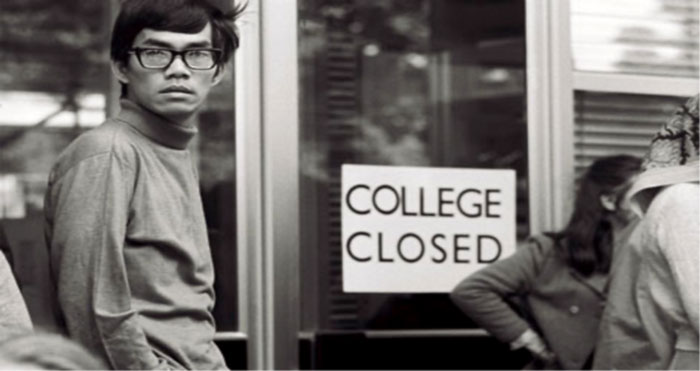
Brighton students had long organised themselves independently, and international students played their part in this. Harold Griffith (1921-2004) from Barbados was a cricketer who had played nine first-class matches for the Barbados cricket team from 1943 to 1947 and in 1952 while at Brighton Technical College was also elected Vice-President of Brighton Students’ Association (now Brighton Students’ Union) as well as impressing locals with his skills as a cricketer for the Brighton and Hove club (see Brighton and Hove Herald, 12 December 1952). Brighton Technical College became Brighton College of Technology which opened on the site of school playing fields in Lewes Road in 1963.
In June 1968, students at Brighton College of Arts protested over the lack of control they had over the curriculum and other matters as part of the year of international revolutionary upheaval underway, and for a week shut down the college.
In 1970, Brighton Polytechnic was formed after a merger of Brighton College of Arts with Brighton College of Technology, later also incorporating Chelsea College of Physical Education. The Brighton Poly Union Student Handbook 70/71 noted the existence of a Ceylon Students Association (for students from Sri Lanka), an Indian Students Association and an Islamic Society. Brighton Poly News Bulletin, no. 31 (December 1975) noted that in 1975/76 the number of overseas students was 725 and the number of nationalities represented was 75. ‘The largest group, 200, still comes from Malaysia but Iran (68) moved into second place.’ Along with many other polytechnics Brighton was granted university status in 1992.
